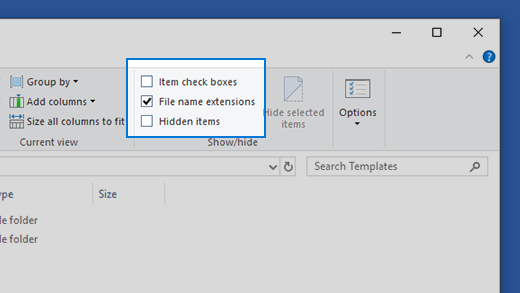
Windows file names have two parts separated by a period: first, the file name, and second, a three- or four-character extension that defines the file type. In expenses.xlsx, for example, the first part of the file name is expenses and the extension is xlsx.
Extensions tell your computer which application created or can open the file and which icon to use for the file. For example, the docx extension tells your computer that Microsoft Word can open the file and to display a Word icon when you view it in File Explorer.
Most file name extensions are compatible with more than one program that you have installed. You can change a file name extension, but that won't convert the file to another format or change anything else about it except the file name. To learn more about how to change which program will open a file, read Change default programs in Windows 10.
If you don’t see file name extensions when you view files in File Explorer:

Below is a list of common Windows file name extensions and formats.